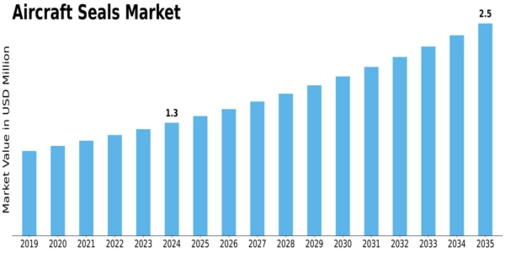Market Outlook
The aircraft seals market Demand is forecast to expand from around USD 1,323 million in 2024 at a CAGR of 5.9 % through 2032. The journey forward will be shaped by both innovation and challenge.
Industry Overview
While the aircraft seals market is rising steadily, it is not without its constraints. The need for lighter, more robust seals meets hurdles such as cost pressures, complex regulatory regimes and material recyclability concerns. According to MRFR, issues such as recyclability of composite materials and aircraft delivery backlogs may moderate growth. Nevertheless, technological advancement—especially in advanced elastomers, composite seals and automation in manufacturing—offers a pathway to overcome these challenges and seize growth in the aircraft seals market.
Key Players
The major players in the aircraft seals market—Eaton Corporation, Esterline Technologies Corporation, Meggitt Plc, Parker Hannifin Corporation, SKF, Trelleborg Sealing Solutions, Brown Aircraft Supply Inc., Hutchinson SA, Saint-Gobain and Technetics Group—are all engaging in material research and process innovation to tackle challenges such as durability, temperature resilience and manufacturability.
Segmentation Growth
From a segmentation perspective, several themes stand out in the aircraft seals market:
- Dynamic seals hold the largest share given the demand from moving components and need for high reliability.
- Engine applications continue to attract the most attention because of the demanding operational environment and high value in the aircraft seals market.
- Material segmentation signals a shift toward composites and polymers, but challenges around recyclability and supply chain may slow adoption in some cases.
- Regionally, North America dominates the aircraft seals market today, but growth toward 2032 and beyond will increasingly come from Asia Pacific and other emerging markets.
Conclusion
The aircraft seals market is both dynamic and competitive. For suppliers, OEMs and investors alike, the path ahead lies in navigating a landscape marked by material innovation, segmentation-specific demand and regional shifts. Addressing challenges proactively will unlock the full potential of this promising market.



